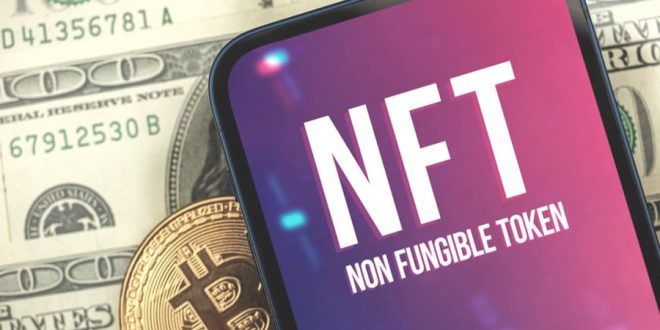The world of e-commerce has been evolving rapidly in recent years, with new technologies and innovations constantly reshaping the way we buy and sell products online. One of the most exciting developments in this space has been the emergence of non-fungible tokens (NFTs), which are digital assets that can be bought and sold on blockchain platforms. In this article, we’ll explore how NFTs are changing the e-commerce landscape, and what businesses and consumers need to know about this exciting new technology.
What Are NFTs?
Before we dive into the impact of NFTs on e-commerce, let’s take a closer look at what they are and how they work. NFTs are unique digital assets that are stored on a blockchain, which is a decentralized and secure database that can’t be tampered with or altered. Each NFT is one-of-a-kind, and can’t be replicated or duplicated.
NFTs can be used to represent a wide variety of digital assets, including artwork, music, video game items, and even tweets. When someone buys an NFT, they’re essentially buying the ownership rights to that particular digital asset. This means that they can sell the NFT later on, just like they would with any other physical asset.
NFTs and E-commerce: A Match Made in Heaven
So, how exactly are NFTs changing the e-commerce landscape? Here are just a few ways that businesses and consumers are using NFTs to buy and sell products online:
1. Unique and Limited-Edition Products

One of the most exciting applications of NFTs in e-commerce is the ability to create and sell unique and limited-edition products. For example, a clothing brand could create a limited run of NFTs that represent a special edition hoodie. Each NFT could be sold to a different customer, who would then have the right to redeem their NFT for the physical hoodie.
This creates a sense of exclusivity and scarcity that can drive up demand for products, and also provides a new revenue stream for businesses. Collectors and enthusiasts are often willing to pay a premium for rare or one-of-a-kind items, and NFTs provide a new way to tap into that market.
2. Digital Art and Collectibles
Another area where NFTs are having a big impact is in the world of digital art and collectibles. Artists can use NFTs to sell their work directly to collectors, without having to go through traditional galleries or auction houses. This allows them to retain more control over their creations and also means that they can receive a larger share of the revenue from their sales.
Collectors, meanwhile, can buy NFTs that represent rare or unique pieces of digital art or collectibles. These NFTs can then be traded or sold on secondary markets, just like physical collectibles. This creates a whole new ecosystem of digital ownership and trading, which is still in its infancy but has huge potential.
3. Fan Engagement and Loyalty Programs
NFTs can also be used to create fan engagement and loyalty programs. For example, a sports team could create a series of NFTs that represent different players or moments from the team’s history. Fans could then buy these NFTs and collect them, with the most dedicated fans being able to collect the entire set.
This creates a new way for fans to engage with their favorite teams and players, and also provides a way for teams to reward their most loyal supporters. NFTs could also be used to create other types of loyalty programs, such as giving discounts or exclusive access to customers who own certain NFTs.
Challenges and Limitations of NFTs in E-commerce
While NFTs have a lot of potential in the e-commerce space, there are also some challenges and limitations that need to be considered. Here are a few key factors to keep in mind:
1. Accessibility
One of the biggest challenges with NFTs is that they can be difficult for the average consumer to access and understand. Buying and selling NFTs requires a certain level of technical knowledge, and the blockchain platforms that host NFTs can be complex and confusing for beginners. This could limit the appeal of NFTs for some businesses and consumers, at least until the technology becomes more user-friendly.
2. Scalability
Another issue with NFTs is that they can be quite resource-intensive to create and manage. Each NFT requires its own unique data and metadata, which can quickly add up for businesses that want to create large numbers of NFTs. This could be a limitation for businesses that want to use NFTs to sell large volumes of products, or for platforms that want to host many different types of NFTs.
3. Environmental Impact
Finally, it’s worth noting that the process of creating and managing NFTs can have a significant environmental impact. Blockchain platforms require a lot of energy to operate, and this can contribute to carbon emissions and other environmental issues. This is a concern for many consumers and businesses, and could limit the growth of the NFT market if more sustainable alternatives aren’t developed.
How to Use NFTs in E-commerce
If you’re interested in using NFTs in your e-commerce business, here are a few steps to help you get started:
1. Determine Your Goals
Before you start creating NFTs, it’s important to determine what you want to achieve with them. Are you looking to create limited-edition products, sell digital art and collectibles, or create a fan engagement program? Understanding your goals will help you make informed decisions about how to use NFTs in your business.
2. Choose a Blockchain Platform
Once you know what you want to achieve with NFTs, the next step is to choose a blockchain platform to host your NFTs. There are many different platforms to choose from, each with its own strengths and weaknesses. Some popular options include Ethereum, Binance Smart Chain, and Flow.
3. Create Your NFTs
Once you’ve chosen a platform, it’s time to create your NFTs. This involves creating a unique digital asset and then minting it on the blockchain platform. Minting an NFT typically involves paying a small fee in cryptocurrency, and once it’s minted, it can be bought and sold on the platform.
4. Market Your NFTs
Once your NFTs are minted, the next step is to market them to potential buyers. This can involve promoting them on social media, reaching out to collectors and enthusiasts, or partnering with influencers or other businesses to increase visibility. It’s important to build buzz and excitement around your NFTs to drive up demand and maximize revenue.
5. Monitor and Manage Your NFTs
Finally, it’s important to monitor and manage your NFTs over time. This includes tracking sales and revenue, ensuring that your NFTs are properly stored and secured on the blockchain, and responding to customer inquiries or issues. It’s also important to stay up-to-date on industry trends and changes in the NFT market, in order to stay competitive and take advantage of new opportunities.
The Future of NFTs in E-commerce
The future of NFTs in e-commerce is still uncertain, but many experts believe that they will play an increasingly important role in the years to come. As more businesses and consumers become familiar with NFTs, it’s likely that we’ll see even more creative applications of this technology in the e-commerce space.
One potential area where NFTs could have a big impact is in the world of virtual and augmented reality. As these technologies become more mainstream, it’s possible that NFTs could be used to represent virtual assets and experiences, such as digital clothing or virtual event tickets. This could create a whole new ecosystem of digital ownership and trading, and could provide a new revenue stream for businesses that are able to adapt to this new landscape.
Another area where NFTs could be used is in the world of gaming. As more games become online-only and virtual, NFTs could be used to represent in-game items and assets that players can buy and sell on secondary markets. This could create a whole new economy around gaming, and could also provide new opportunities for players to monetize their time and effort spent playing games.
Finally, it’s worth noting that the future of NFTs in e-commerce will depend largely on how the technology develops over time. As the blockchain ecosystem continues to evolve, it’s likely that we’ll see new innovations and improvements that make NFTs more accessible, scalable, and sustainable. This could open up new opportunities for businesses and consumers alike, and could make NFTs a more mainstream part of the e-commerce landscape.
Conclusion
Non-fungible tokens are a fascinating new technology that have the potential to transform the e-commerce landscape. By creating unique and one-of-a-kind digital assets, NFTs provide a new way for businesses and consumers to buy and sell products online. However, there are also challenges and limitations to consider, particularly around accessibility, scalability, and environmental impact.
Overall, NFTs represent a significant opportunity for businesses and entrepreneurs who are willing to embrace new technologies and explore new business models. By staying ahead of the curve and experimenting with NFTs, it’s possible to tap into a growing market of consumers who are looking for unique and innovative products.

I’m a highly experienced and successful crypto author who has helped thousands of people to invest in cryptocurrencies. I have a good knowledge and experience in the industry, and I have always been up-to-date with the latest developments. I’m a highly respected member of the crypto community, so if you are looking for someone to help you navigate the world of cryptocurrencies, then you can always contact me.
 Crypto Print
Crypto Print

